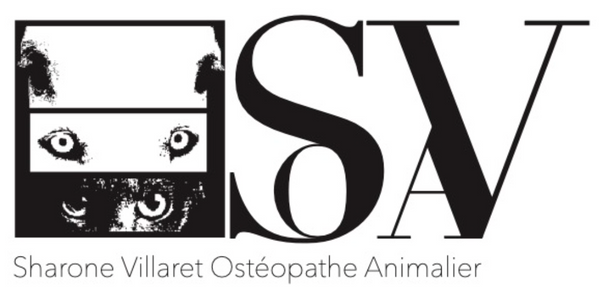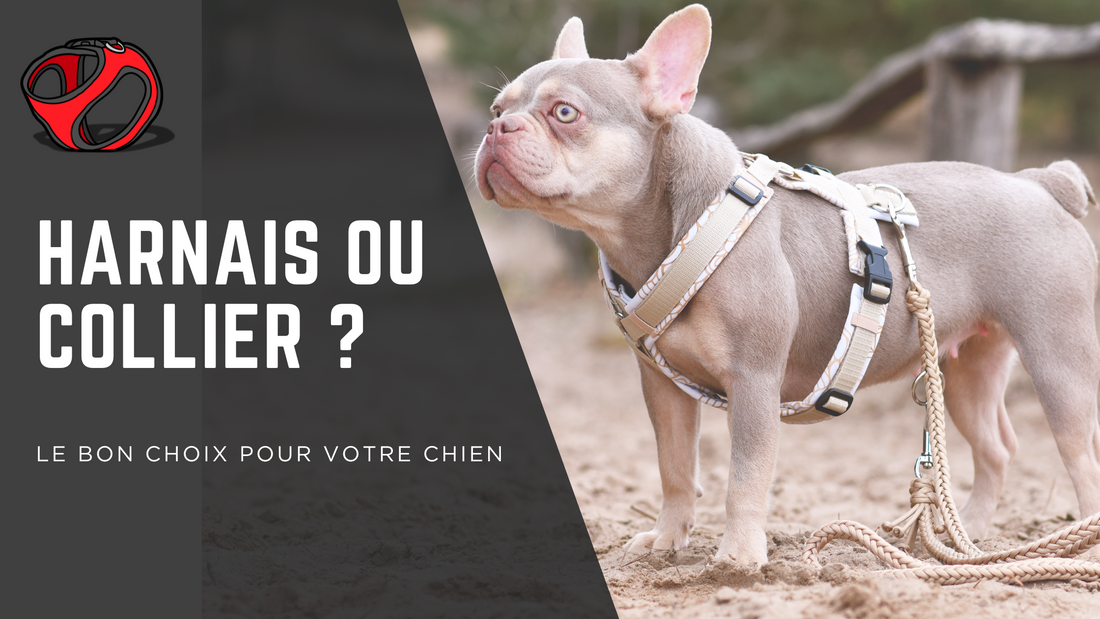When it comes to equipping your dog for walks, the choice between a harness and a collar is often a source of debate. While the collar is still widely used, the harness is emerging as a more respectful option for the dog's anatomy and mobility , provided you choose it carefully.
In this article, we will see:
✅ Why the collar can have negative effects on the dog's anatomy
✅ Why the harness is a better choice for joint and muscle health
✅ How to choose the right harness (Y-shaped vs. shoulder-locking harness)
✅ The importance of osteopathy in removing blockages related to walking equipment

1. Harness vs. Collar: A Question of Anatomy
The choice between harness and collar directly impacts the dog's essential anatomical structures , including the cervical spine, shoulder girdle (shoulders), rib cage and thoracic spine .
📌 The Collar: A Direct Impact on the Cervical Area
The collar puts pressure on the cervical spine and the nerve and vascular structures of the neck , especially when pulling on the leash.
⚠ Possible consequences of a misused collar :
🔹 Compression of the cervical vertebrae (C1-C7), causing stiffness and pain.
🔹 Pressure on the trachea and larynx, promoting coughing and respiratory problems.
🔹 Damage to the vagus nerve (X), which regulates the heart and digestion.
🔹 Repeated microtraumas aggravating muscle and joint tension.
📌 The Harness: A Better Pressure Distributor
The harness allows for better distribution of forces across the entire thorax rather than just a fragile area like the neck.
✔ Prevents compression of the cervical vertebrae and protects the trachea.
✔ Preserves shoulder mobility by allowing natural extension of the forelegs.
✔ Reduces muscle and postural tension when pulling on the leash.
💡 A well-chosen harness helps preserve the dog's biomechanical balance and limit unnecessary tension.
2. Why Should Some Dog Breeds Always Wear a Harness?
Certain dog breeds are more sensitive to the harmful effects of the collar due to their morphology.
🔹 Brachycephalic dogs (Bulldog, Pug, Shih-Tzu, Pekingese, Cavalier King Charles)
→ Already predisposed to respiratory problems, a collar aggravates tracheal compression.
🔹 Miniature and toy dogs (Chihuahua, Yorkshire, Spitz, Miniature Pinscher)
→ Fragility of the cervical vertebrae, risk of tracheal collapse.
🔹 Dogs prone to herniated discs (Dachshund, Beagle, Bulldog, Basset Hound)
→ A collar can increase pressure on the cervical intervertebral discs and increase the risk of disc herniation.
🔹 Working or sporting dogs (Malinois, Border Collie, Australian Shepherd, Husky, Retriever)
→ A collar can create unnecessary tension on the shoulder girdle and limit their physical performance.
💡 For these breeds, the harness is not just an additional comfort, it is a real necessity to avoid health complications.
3. How to Choose the Right Harness? (Y-Harness vs. Restrictive Models)
Not all harnesses are created equal. A bad harness can have just as many negative effects as a collar.
📌 The Right Harness: Y-Back Model (or H-Back)
✔ Y-shape at the front, allowing total freedom of the shoulders .
✔ Straps passing over the sternum and around the thorax , without pressure on the joints.
✔ Preserves the biomechanics of the forelegs and the dog's natural posture.

📌 Harnesses to Avoid: Shoulder-Blocking Harnesses
❌ T-harness or anti-pull harness that rests directly on the shoulders .
❌ Blocks the extension of the forelegs , limiting the stride and promoting muscle tension.
❌ Can create chronic postural imbalances .
💡 A good harness allows for natural mobility and optimal comfort.
4. Role of Osteopathy in Relieving Tension and Preserving Mobility
Even with a good harness, some dogs develop tension or blockages related to daily use of the leash. Canine osteopathy plays a key role in maintaining their mobility and well-being.
📌 Areas frequently impacted by walking equipment :
✔ C7-T1 (cervical-thoracic junction) → Sensitive to microtraumas linked to traction.
✔ Thoracic ( Upper dorsal) (T1-T6) → Stressed during sudden movements or poor harness.
✔ Shoulders (scapulohumeral) → May be limited by an ill-fitting harness.
📌 Benefits of osteopathy for dogs wearing harnesses or collars :
✔ Correction of vertebral blockages and improvement of posture.
✔ Reduction of muscle tension linked to microtraumas.
✔ Prevention of chronic pain and postural compensations.
💡 Regular osteopathic monitoring allows the dog's equipment to be adapted and its locomotor comfort to be optimized.


5. Conclusion: Why is the Harness a Better Choice for Your Dog?
✅ The collar can compress the cervical vertebrae, trachea and nerves in the neck , causing pain and breathing difficulties.
✅ The well-fitting harness (Y-shaped) distributes pressure across the chest without blocking the shoulders, thus preserving the dog's mobility and comfort .
✅ Certain breeds (brachycephalic, miniature, sporting, predisposed to herniated discs) should systematically be equipped with a harness.
✅ Canine osteopathy is an excellent complement to prevent joint blockages, relieve muscle tension and optimize your dog's well-being .
💡 Choosing the right harness and consulting an osteopath regularly helps preserve your companion's mobility and health in the long term! 🐶💙

